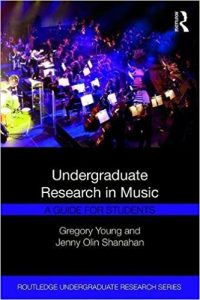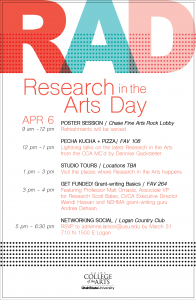Eighteen institutions were awarded up to $100,000 to fund interdisciplinary instructional modules under this innovative grant program. CURAH advocacy played a role in its creation!
https://www.neh.gov/news/press-release/2017-04-03
Eighteen institutions were awarded up to $100,000 to fund interdisciplinary instructional modules under this innovative grant program. CURAH advocacy played a role in its creation!
https://www.neh.gov/news/press-release/2017-04-03
 Greg Young, professor of music, veteran CURAH councilor, and author with Jenny Shanahan of the forthcoming Undergraduate Research in Music , sends this link: http://www.montana.edu/news/16320/recent-msu-graduate-to-present-at-world-congress-on-undergraduate-research-in-qatar
Greg Young, professor of music, veteran CURAH councilor, and author with Jenny Shanahan of the forthcoming Undergraduate Research in Music , sends this link: http://www.montana.edu/news/16320/recent-msu-graduate-to-present-at-world-congress-on-undergraduate-research-in-qatar
 This year the Caine College of the Arts at Utah State University celebrated its second art-focused research festival. Events included a poster and presentation session, a workshop on grant-writing in the arts, a networking party, and (crowd favorite) a Pecha Kucha style event, which is a fun, energetic session in which presenters have six minutes and forty seconds to speak in front of twenty slides that rotate on a twenty-second basis — it’s a combo of performance art, elevator talk, and stand-up routine. Although this year we weren’t part of the official “movement” we hope that in the future we’ll be able to partner with the organization that came up with the format. It fits the arts well, having been developed specifically for presentations by architects and designers.
This year the Caine College of the Arts at Utah State University celebrated its second art-focused research festival. Events included a poster and presentation session, a workshop on grant-writing in the arts, a networking party, and (crowd favorite) a Pecha Kucha style event, which is a fun, energetic session in which presenters have six minutes and forty seconds to speak in front of twenty slides that rotate on a twenty-second basis — it’s a combo of performance art, elevator talk, and stand-up routine. Although this year we weren’t part of the official “movement” we hope that in the future we’ll be able to partner with the organization that came up with the format. It fits the arts well, having been developed specifically for presentations by architects and designers.
Convincing students, faculty, and the wider campus community that research happens in the arts can be an uphill battle, but what I noticed this year was that a lot of people attended because they had heard that last year’s event was fun. So if I had one piece of advice to offer to anyone organizing a research-in-the-arts event like this it would be: leverage the entertainment value inherent in t he arts.
he arts.
Next year, building on the growing awareness among our students and faculty that research happens in the arts, we plan to include a stronger component of community outreach; local K-12 arts programs will be invited to attend and participate, and we plan to purchase advertising in programs for regional music, theater, and arts events. We’d like to partner with the official Pecha Kucha organization to make that even happen on an even bigger scale (it was standing-room only this year, and the free pizza vanished instantly).
Our college administrators have the foresight and wisdom to provide generous support for the program, but what really makes it tick is faculty and student engagement, and I found that one of the big factors that made it such a success this year was that as the chair of the organizing committee I spread the work out across as many people and disciplines as I could. There were a lot of “asks,” and it was hugely gratifying to see everyone rise to the occasion — last year felt like much more of an uphill battle, so I know that the work we’re putting in is creating a culture of UR in our college.
-Alexa Sand
[Poster and postcard by Susie Tibbetts, Assistant Professor of Interior Design]
Two excellent signs of the College Art Association’s increasing awareness and support of UR as a high-impact practice!
Potential Subjects Covered: Pedagogy-Educational Strategies-Teaching Methodology
Required Materials: All participants should bring 3 copies of a lesson plan, syllabus, or program curriculum that you think could be enriched with greater attention to and more rigorous assessment of undergraduate research based learning. This can be something you are already using, or something you wish to develop and implement in the future.
Registration for this workshop capped at: 24
Thanks to the long-time advocacy efforts of Maria Iacullo-Bird, Joe Trimmer, and others, the NEH has created its first grant opportunity that specifically mentions undergraduate research among the criteria. “Humanities Connections” grant proposals are due on October 5, 2016 for Projects Beginning May 2017.